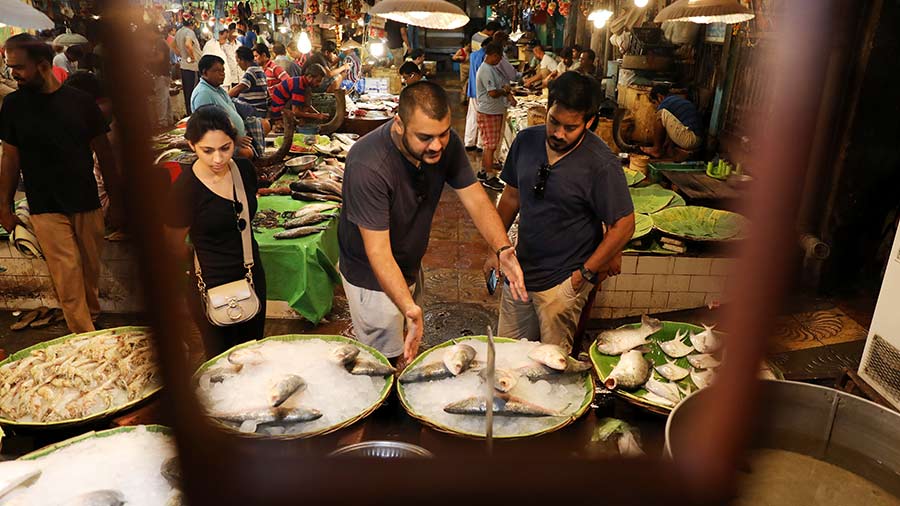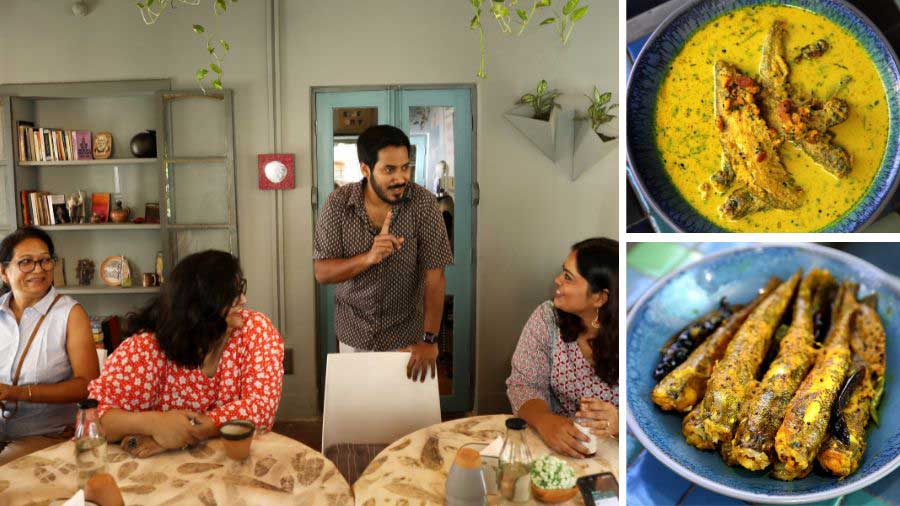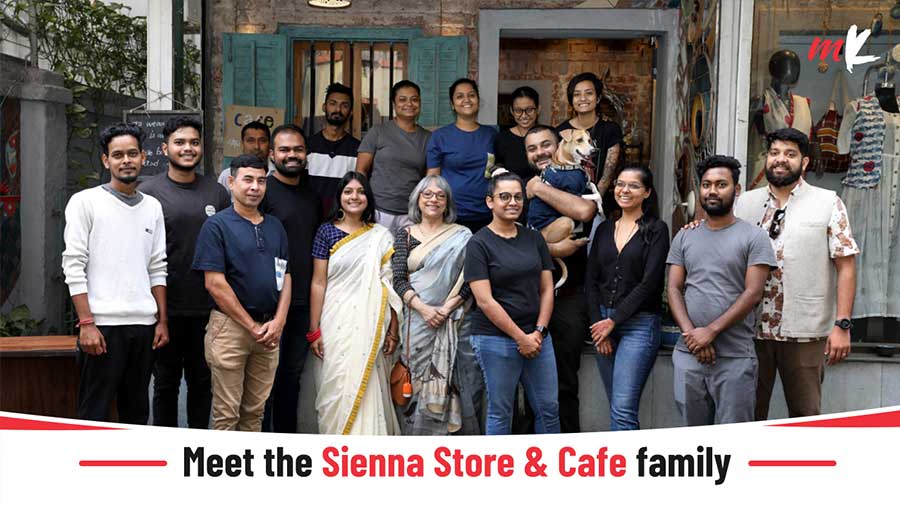I think, therefore I eat.
Six years ago, if you had asked me what India’s greatest city to eat in is, Kolkata wouldn’t have been at the top of my mind at all. I’d have probably started with Panjim or Bombay, moved on to Bangalore, Chennai or Delhi, and only then would my mind have come to Kolkata. As funny as it sounds, before I moved here, I really didn’t know much about the city’s culinary ways. I’d heard many legendary tales from my parents, my father especially, but, somehow, I used to dismiss most of it as nostalgia.
Most of my visits to the city were as a grandchild; thus, my movements were restricted. And it didn’t help that the oldies had a strict no-eat list; god forbid I get food poisoning or, worse, typhoid! While I did get a taste of the bajaar, some of the clubs, mishti and lots of my Dida and Thamma’s cooking, I never got the chance to do much exploring on my own. In any case, if your family is hosting you, the notion of ‘eating out’ is always frowned upon in Bengal.
And that’s the thing: if you gauge the city of Kolkata by its book cover, your only real takeaways are eateries on Park Street, the everlasting club spread on Christmas, Biryani with Aloo, Kathi Rolls, Kosha Mangsho with Luchi, Daab Chingri, and, if you’re really adventurous, Shorshe Bhapa Ilish. But if you scratch the surface, if you go past the initial chapters (like with a Rushdie novel), meet the people, walk the streets and explore the bajaars, you’ll discover a culinary legacy that’s rich in history, culture, flavour and a sense of Magic Realism that very few cities around the world can match.
Every Kolkatan’s culinary sense of self
Today, it’s been a little over six years that I’ve made the city my home, and I can proudly say that, as a chef, it’s the only place I’d like to cook and operate a restaurant in, in India or elsewhere – and this article and any future columns are my culinary love letter to all things Kolkata and Bengal. In this article, I’m going to talk about a quality that I think defines the region’s diners – every Kolkatan’s culinary sense of self.
During a preliminary visit to the city as a chef and not a grandson, one of the first things that struck me with every meal I ate was just how much thought and effort every Kolkatan puts into their meals. And this didn’t just happen at a Mocambo or a 6 Ballygunge Place or a Baan Thai – it translated itself into every facet of the Kolkata way of eating, including street or fast food.
During that trip, I remember stepping out on to Theatre Road one day with the intention of getting a snack for the team and me. At the corner, there was a fellow mixing muri. A busy crowd lined up around him – always an encouraging sign. Spurred on by the good omen, I joined the pack and awaited my turn. The next 15-20 minutes were some of the most revealing and fascinating moments I’ve spent getting to know and understand the city and its culinary ways.
Having lived in Bombay for some years by then, I was used to a rather utilitarian style of snacking, with vada or bhajiya pav being a favourite go-to. And for the 10-15 rupees that you typically spent on that unit of food, the vendor gave you exactly those many seconds of their time. At the most, they’d clarify your chutney preferences, which were hurriedly splashed on to the pav and batata vada before being wrapped in newspaper and handed to you, sending you on your way.
At the muri stall, I was gobsmacked by the extent of time and personalisation the vendor allowed. The first person in line before me was particular about just how kuchi he wanted his peyaj and kancha lonka to be. The lady who came after was packing a large office order of multiple specifications – no lonka, more lonka, more peyaj, extra chanachur, no shorshe tel, no chine badam. Even interns making a coffee run for the big bosses wouldn’t agree to so many variations and specifications, let alone the barista at Starbucks! The third in line was really specific about which lonka and lebu he wanted the vendor to add to his mix – he was clear in pointing out, “Oi lonka ta ghaas – amake jhaal ta debe”.
When my turn finally came, I was so overwhelmed by everyone else’s order that I didn’t even know what to say. The vendor and everyone gathered around looked at me awkwardly when I said “medium jhaal”, as the degree of spice was the only real variation most Bombay chaat and bhel vendors offer. They could clearly recognise just how much of a probashi noob I was.
It was while walking back from that interaction that the daab dropped. It was the first time that I really understood that the Kolkatan is a thinking diner, and that displaying individuality in the way she or he ate was one of the greatest expressions of personality for a Kolkatan. And, more than anything else, there was a cerebral process that directly affected what is usually an intensely emotional or instinctive act of eating.
Never make the mistake of discounting the mind of a Kolkata diner
Going forth, I started making this observation in many other culinary interactions I encountered. At the bajaar, three different people had three wholly different ways of wanting the same pabda maach butchered. At the chop-er dokan, someone wanted their beetroot chop fried to a darker brown, but not their fish fry – after all, the fish would overcook. At the mutton shop, every customer deliberated with the butcher as to which cuts would be ideal for what they intend to make. Moreover, everyone had his or her own favourite cut of offal. One day, a fellow shopper at the bajaar tried to explain to me her 10 commandments for pairing different kinds of bori with different vegetables and maach. I felt lucky, as though I had just chanced upon some culinary wisdom of the highest order. Ironically, the mashi who made and sold us the boris disagreed. She had her own commandments!
It was with interactions such as these that I slowly formulated the primary culinary tenet I always maintain, the one culinary star I always keep on the horizon as a chef in the city: never make the mistake of discounting the mind of a Kolkata diner. During the initial days, it really had me intimidated. It also hurt my ego, A LOT. But once I got the hang of it, it really made me think about cooking in a different way. Ultimately, the best chefs want to cook for a palate and mind that can challenge them, and push them to cook delicious food like no one else has thought of before. And that’s the beauty of it in Kolkata. Here, every palate has a voice and mind of its own. Now which chef wouldn’t want a dining room full of such patrons?
Luckily, for the Sienna Fam and me, we have a whole city full of them. It’s what keeps us motivated to always cook our best. But, more than anything else, it means that we always keep both our chef’s knives, and minds, really sharp.
A copywriter by training, a Delhi-ite at heart and a probashi Bengali by blood, Auroni Mookerjee used to make ads for a living. A few years ago, he gave up his copywriter’s job to cook and feed people full-time, and moved to the deliciously joyous city of Kolkata. Now, he is executive chef and head of the kitchen family at the Sienna Store & Cafe.






